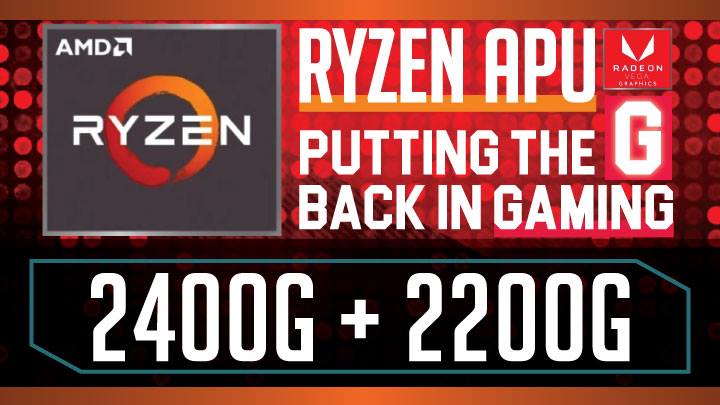
Before we begin we do have to make one thing clear. Both the 2200G and 2400G may have a 2-series moniker but they are not actually second-generation Ryzen processors, nor are they really first-generation Ryzen processors. Rather it is best to consider these new Ryzen APUs as ‘Ryzen 1.5’. What we mean by this is that they are not just a Ryzen 5 1500X or Ryzen 3 1300X with Vega Compute Units tacked on. Instead they are built from the ground up to be something different. Part Ryzen ‘1.0’ and part Ryzen ‘2.0’. So it is best to consider the Raven Ridge series a teaser of things to come.

The reason for this combination of old and new is complicated but boils down to the lead time on designing a new processor – be it a ‘CPU’ or ‘APU’. When AMD’s APU designers started working on their next generation Raven Ridge APU, Zeppelin (aka ‘Ryzen 1.0’) was complete and work on Pinnacle Ridge (aka Zen+ / ‘Ryzen 2.0’) had been started but all the details had not been finalized. AMD’s design team had a decision to make. We think they chose the right option. The first option was to simply make their new APU refreshed Ryzen 1.0 and have it quickly superseded by Ryzen 2.0 designs. Option 2 was they could have waited and not release an APU refresh this generation; or three, they could do what they eventually decided to do: carry over as much of the enhancements as they could without delaying Ryzen ‘G’ APU series even longer.
In practical terms this does make the Ryzen 5 2400G and Ryzen 3 2200G a bit of anachronism in that while consumers will get a taste of what the next generation Ryzen processors can do… they will have to wait for the next wave of Ryzen APU models before they can fully experience AMD’s next generation designs. In the meantime, these new APUs really are a new and unique creation that probably will not be seen again for quite some time.

This begs the question on how they do differ from both previous Ryzen 1.0 processors and future Ryzen 2.0 based processors. We can only speculate on the latter, but there are distinct known differences between these two Ryzen APUs and previous Ryzen CPUs. The most obvious change is that these two new Ryzen APUs support DDR4 frequencies of up to 2933 instead of 2666 like the original Ryzen series. Equally impressive is the improved Integrated Memory Controller (IMC) has no troubles handling DDR4-3200 speeds – so much so our reviewer sample kit came with a memory kit consisting of two 8GB sticks of G.Skill Flare-X DDR4-3200.
As Infinity Fabric is directly tied the RAM bus speed this also means the 2200G and 2400G’s Infinity Fabric is rated to run at speeds of up to 1466Mhz – instead of 1300Mhz – without being ‘overclocked’. As we showed in a previous review, Infinity Fabric speed plays a large role in real world performance. So this extra performance boost should translate into a nice real-world performance boost.

Also improved is Precision Boost. Now called Precision Boost 2 this improved Dynamic Voltage Frequency Scaling algorithm may still ‘only’ offer 25MHz increment adjustments, but instead of being limited in that it was either 2 core or all core settings, Precision Boost 2 allows for individual core adjustments to max out performance without overshooting the TDP specifications. This backstopped with more precise monitoring – via 1000 ‘Pure Power’ sensors – of core voltage, temperature and power consumption means that each core in the APU will achieve a more optimal real world performance frequency setting and be much more responsive to real world changes than any first generation Ryzen processor.

Since the upcoming Ryzen 2-series also are fabricated on a new ’14nm+’ process the actual cache and cores themselves are also slightly improved with these APUs compared to first generation Ryzen processors. It still is not 12nm fabrication, but much like Intel’s “double tock” AMD has taken this opportunity to remove errata and refine their dosing without the usual accompanying node-shrink. The end result should be a slight bump in efficiency and maybe a slight Instructions Per Cycle (IPC) bump. In this regards the Ryzen 5 2400G will be more optimal choice for demanding tasks as – just like previous Ryzen 5 models – it is has native symmetric multi-threading (SMT) enabled allowing for 4 cores with 8 threads, whereas the Ryzen 3 2200G – just like previous Ryzen 3 models – is not SMT enabled and is as such a 4 core, 4 thread processor.
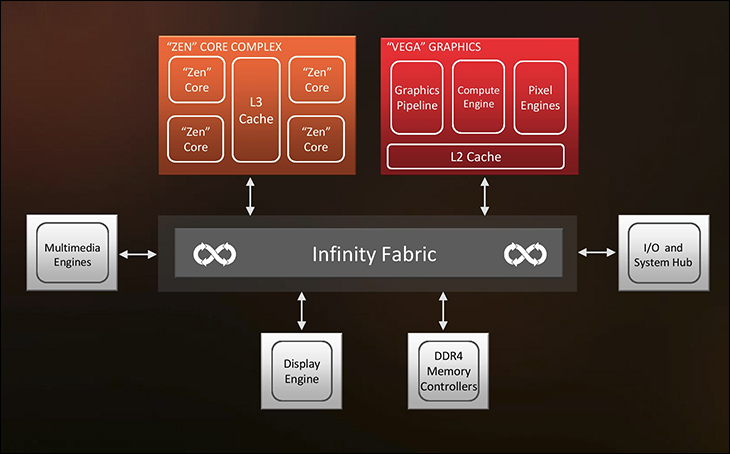
Going hand in hand with better performance management and some low-level refinement is the fact that in order to offer a four core APU all cores had to be housed in one CCX. This means with only one CCX dedicated to CPU tasks the total amount of L3 cache has been significantly reduced. For instance, a Ryzen 5 1500X offers 16MB of L3 and a Ryzen 3 1300X has 8MB of L3, whereas the Ryzen 3 2200G and Ryzen 5 240G only come equipped with 4MB of L3 cache. Counteracting this reduction in cache is improved algorithms which should somewhat help offset the reduction in capacity. In either case, the more important L1 and L2 cache buffer size has been kept the same (at 384KB and 2MB respectively).

Equally important is since all four cores are in the same CCX there will never be random latency spikes that can occur on 2+2/3+3/4+4 Ryzen 1.0 designs. Instead all four cores can quickly share the necessary data when dealing with extremely demanding tasks without first transferring it across the Infinity Fabric. Instead the Infinity Fabric will be used mainly for off chip data transfer and cross talk between the ‘CPU’ CCX and the Vega Compute Units.
Interestingly enough while both Ryzen APUs do offer Precision Boost 2 they do not come equipped with XFR 2. In fact any version of XFR, or eXtended Frequency Range, is totally MIA on this pair of APUs. This does make sense as these are orientated more towards the value end of the market where processor demands are lower. Plus, the moment you overclock either portion of the APU such features are disabled… and as we will show you later in the review a bit of overclocking goes a long way with these APU models. To help minimize this perceived limitation AMD has given both their APUs very peppy base clock ratings (3.5GHz for the 2200G and 3.6GHz for the 2400G) and very nice max boost setting of 3.7GHz (2200G) and 3.9Ghz (2400G). In the case of the Ryzen 5 2400G this means the max boost setting is the same as the XFR max frequency boost of a Ryzen 5 1500X… yet will hit this speed on more than just one core!
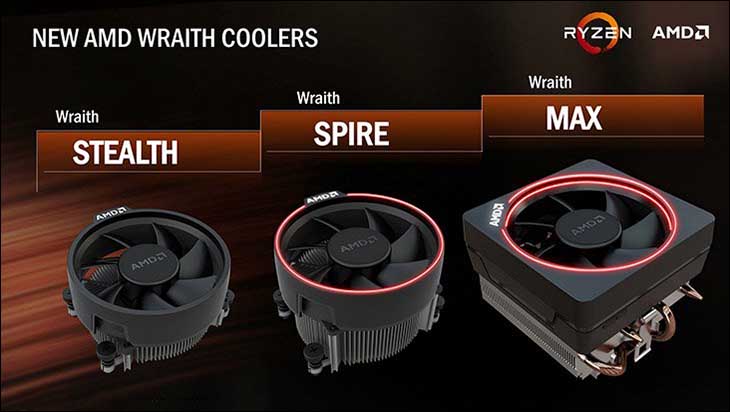
As with previous Ryzen CPUs when it comes to Ryzen APUs… cooling trumps paper specifications. So in order for these APUs to hit their max boost settings and stay there proper cooling will be required. Yes they are only 65 watt TDP processors but they are still sixty five watt processors. On this front we are slightly disappointed in what stock cooling solution AMD has chosen to include. Or to be more precise on what they have included with the Ryzen 5 2400G.
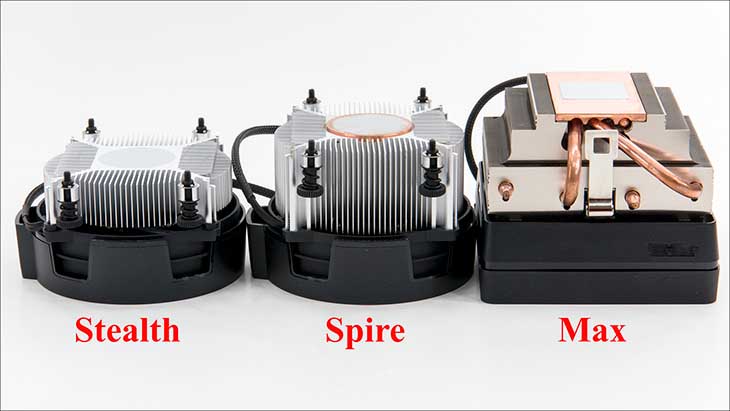
The Ryzen 5 series models we reviewed earlier came with the very impressive Wraith Spire which is a copper core with aluminum heat fins based cooling solution. Unfortunately, the Ryzen 5 2400G comes with a Wraith Stealth… or the exact same one the Ryzen 3 2200G comes with and what all Ryzen 3 CPUs come with. Yes, the all-aluminum Wraith Stealth cooler is more than up to the task of keeping these 65 watt TDP processors from thermal limiting at stock speeds but this cooler and its cooling performance does not leave as much room for Precision Boost 2 to… boost performance. So temperatures are going to be the main limiting factor for these new APUs when using the included cooling solution. Given how inexpensive these two APU models are springing for a Cooler Master 212+ or similarly priced aftermarket cooler is certainly not a hardship. It is just something that could have been avoided by simply increasing the Ryzen 5 2400G’s MSRP by few dollars. A few dollars most people would have gladly spent to get a much more optimal factory cooler.
The last change has to do with the amount of PCIe lanes are dedicated to a discrete GPU solution. Instead of 16 lanes these APUs only have 8 lanes. It is debatable if this really matters as the real-world performance difference between even an AMD Vega 64 in 8x mode vs in 16x mode is minor to say the least. More importantly, these APUs come with actually good integrated graphics solutions so the need for a discrete video card has been greatly decreased for their intended market niches.
This brings us to the largest change from the rest of the existing Ryzen desktop line-up: integrated graphics! It is kind of hard to have an APU without a graphics processor baked in and here is where AMD pulled out all the stops. To be precise AMD has bestowed their new APU lineup with Vega based Compute Units. To be precise the Ryzen 5 2400G makes use of an integrated Vega 11 video processor running at a rather fast -for an integrated solution – 1.24GHz; whereas the Ryzen 3 2200G comes with a Vega 8 running at a still fast 1.1GHz.
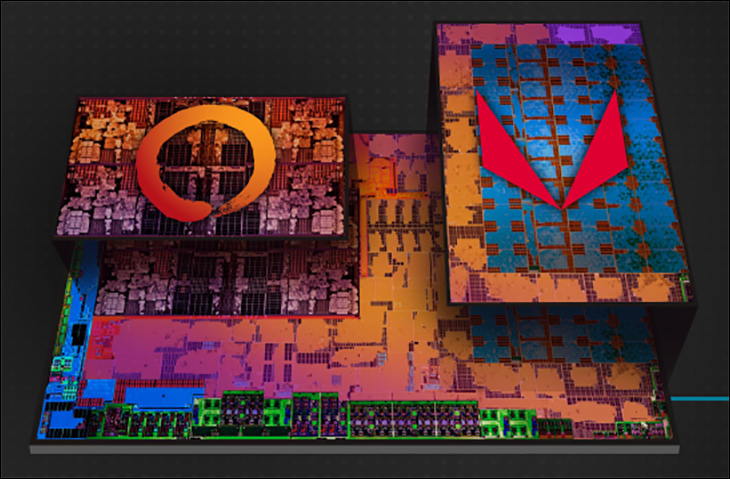
As to the specifications of each AMD has made things rather easy. Just as with their AMD Vega discrete video card line-up the nomenclature is extremely easy compare and contrast as the name itself tells you how many Vega Compute Units are enabled. This means Vega 11 has 11 CUs, and Vega 8 has 8. Each Vega Compute Unit consists of numerous building blocks but to keep it simple the Vega 11 has 704 Stream Processors, 44 Texture Units and 16 ROPs. Vega 8 has 512 Stream Processors, 32 Texture Units and 16 ROPs.
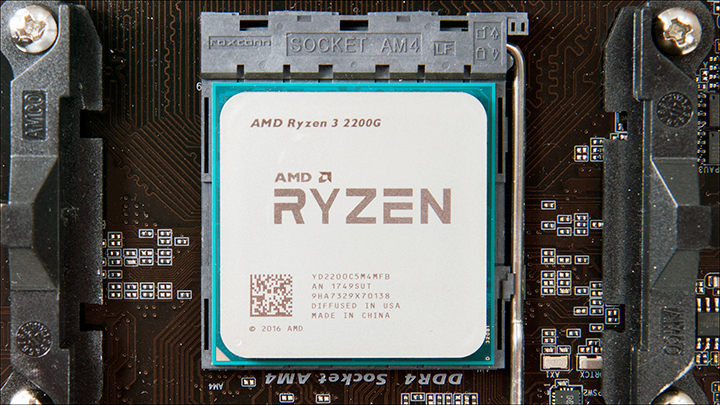
To put it mildly either of these Vega graphics processors are the most powerful to ever be released in any CPU or APU. This level of potential performance truly is stunning and when you consider that they communicate directly with the ‘other’ CCX over the Infinity Fabric the overall latency is incredibly low compared to discrete vide processor solutions. The only minor issue is that since AMD’s previous APU designs killed off low end discrete video cards, and AMD is not releasing low end Vega any time soon this new breed of APU will not have its predecessors ‘Dual Graphics’ support. Dual Graphics was an interesting idea in that when you paired a similar discrete video card solution with an APU both would work in sync to share the load – think CrossFire but with APU+GPU instead of dual GPU configuration. Few ever bothered with such a configuration and most instead opted for a mid-level discrete video card solution if the ‘onboard’ video processor proved to be ineffective. Considering the new Radeon Vega based APUs are much, much more powerful we doubt many will care about this loss.
The only real issue is their memory bus performance is extremely limited compared to a discrete graphics solution. As there is simply no room on the die for dedicated video memory these ‘video cards on a chip’ have to rely upon the systems DDR4 memory for their needs. This does put them at a distinct disadvantage compared to discrete solutions which rely upon GDDR5 or HBM 1.0/2.0 memory. Needless to say, if video game performance is important to you… you will want to go with a fast DDR4 kit – and DDR4-2933 would be a good starting point. Also worth mentioning is the APU’s Vega graphics is limited to 2GB of system memory, which is rather small even for 1080P resolutions these days.
This memory issue would actually not be a problem if AMD ever decides to release a TR4 socketed APU as the ‘Threadripper’ die is massive with plenty of room for not only two CCXs and two ‘Vega 11s’ but also room for a HBM die or two. Maybe one day AMD will take aim at the mainstream PC gaming consumer and make even more levels of discrete video card solutions a thing of the past. In the mean time lets put these two little power houses to the test and see what they really can do.
